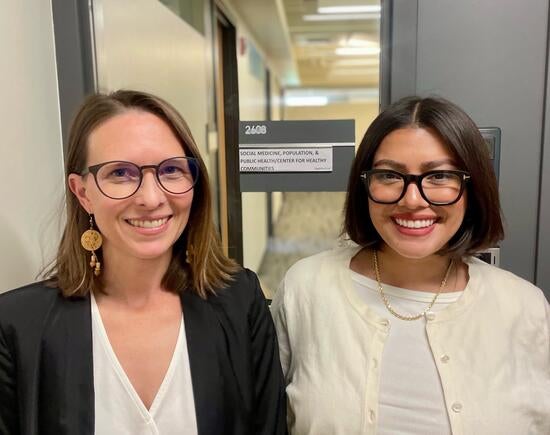In unincorporated communities in the US-Mexico border areas, historically and socially marginalized populations become invisible to the health care system, demonstrating that geography acts as a structural determinant of health for low-income populations . This is the conclusion of a study by a team from the University of California, Riverside, which focused its attention on the border area of southern California, specifically east of the Coachella Valley.
From September to December 2020, the team, led by Ann Cheney, associate professor of social medicine, population and public health in the School of Medicine, conducted interviews in collaboration with Mara Pozar, community researcher and CEO of Conchita Servicios de la Comunitat, with 36 Latino and indigenous Mexican caregivers of children with asthma or respiratory difficulties. The researchers found that communities in the colonies (unincorporated areas in the border areas) lack basic basic infrastructure, including access to health care.
The US-Mexico border is home to nearly 2.7 million Hispanic or Latino individuals. The immigrant population in the colonies has English proficiency, limited income and health literacy levels, and lower levels of formal education. Many are undocumented.
Our work shows the importance of geography in health and how geography acts as a structural determinant of health, said Cheney. For example, foreign-born caregivers who speak Spanish or Purpecha prefer to take their children to the US-Mexico border for respiratory medical care because doctors there provide them with a diagnosis and treatment plan they perceive that improves the health of their children.
The study, published in the journal Social Science & Medicine, found that caregivers perceive that doctors in the United States do not provide them with enough information, as most doctors do not speak their language and do not listen adequately or are dismissive of their concerns about their children. respiratory health Caregivers perceive that doctors in Mexico provide them with a diagnosis and treatment plan, whereas doctors in the United States often prescribe medication and do not provide a specific diagnosis.
Also, only those with legal documentation can cross the border, which contributes to disparities in children’s respiratory health, Cheney said. Thus, caregivers without legal status in the US must access health care services in the US for their children and receive, what these caregivers perceive, as suboptimal care.
Cheney added that she was surprised to learn that caregivers without legal documentation in the US asked family members and trusted friends to bring their children across the border for health care services for childhood asthma and related conditions.
Geography, meaning living in unincorporated communities, hurts health, he said. The geography and politics of the place determine who can and who cannot cross borders.
Study participants discussed the distance they needed to travel to pediatric specialist care for the care and management of their children’s respiratory health problems. Some commented on the lack of interaction and communication with doctors during medical visits. Some participants commented on doctors’ lack of knowledge about the connections between their children’s exposure to environmental hazards and poor respiratory health and allergy symptoms.
The research was conducted in four rural unincorporated communities La Mecca, Oasis, Thermal and North Shore in the eastern Coachella Valley along the northern section of the Salton Sea. People living in colonies here are subject to the health effects of environmental hazards. Many are farm workers who live and work in the nearby agricultural fields. Most of the workforce lives in mobile parks and below the federal poverty line.
In addition to the toxic water and dust from the Salton Sea, other environmental health hazards such as exposure to agricultural pesticides, waste processing facilities, and unauthorized landfills also contribute to this community’s a high incidence of poor respiratory health, said Gabriela Ortiz, the first. author of the research paper and graduate student in anthropology working with Cheney. These communities are vulnerable to government policies and decisions regarding exposure to environmental hazards and infrastructure development. The absence of infrastructure and the lack of health infrastructure limits their access to primary care and specialized care services.
Ortiz explained that anthropologists and social scientists have long argued that environmental injustices are the product of structural violence.
It is indirect violence caused by social structures and institutions that prevent individuals from meeting their basic needs due to political economic domination and class exploitation, he said. Understanding the complex interplay between geography, borderlands and health is essential to developing effective public health policies and interventions.
The title of the research paper is Seeking Care Across the US-Mexico Border: The Experiences of Latino and Mexican Indigenous Caregivers of Children with Asthma or Respiratory Distress.
Cheney, Ortiz and Pozar were joined on the study by UCR’s Ashley Moran and Sophia Rodriguez.
The study was funded by the National Institutes of Health/National Institute of Minority Health and Health Disparities.
Header image credit: Arseniy45/iStock/Getty Images Plus.
#Location #location #location
Image Source : news.ucr.edu
